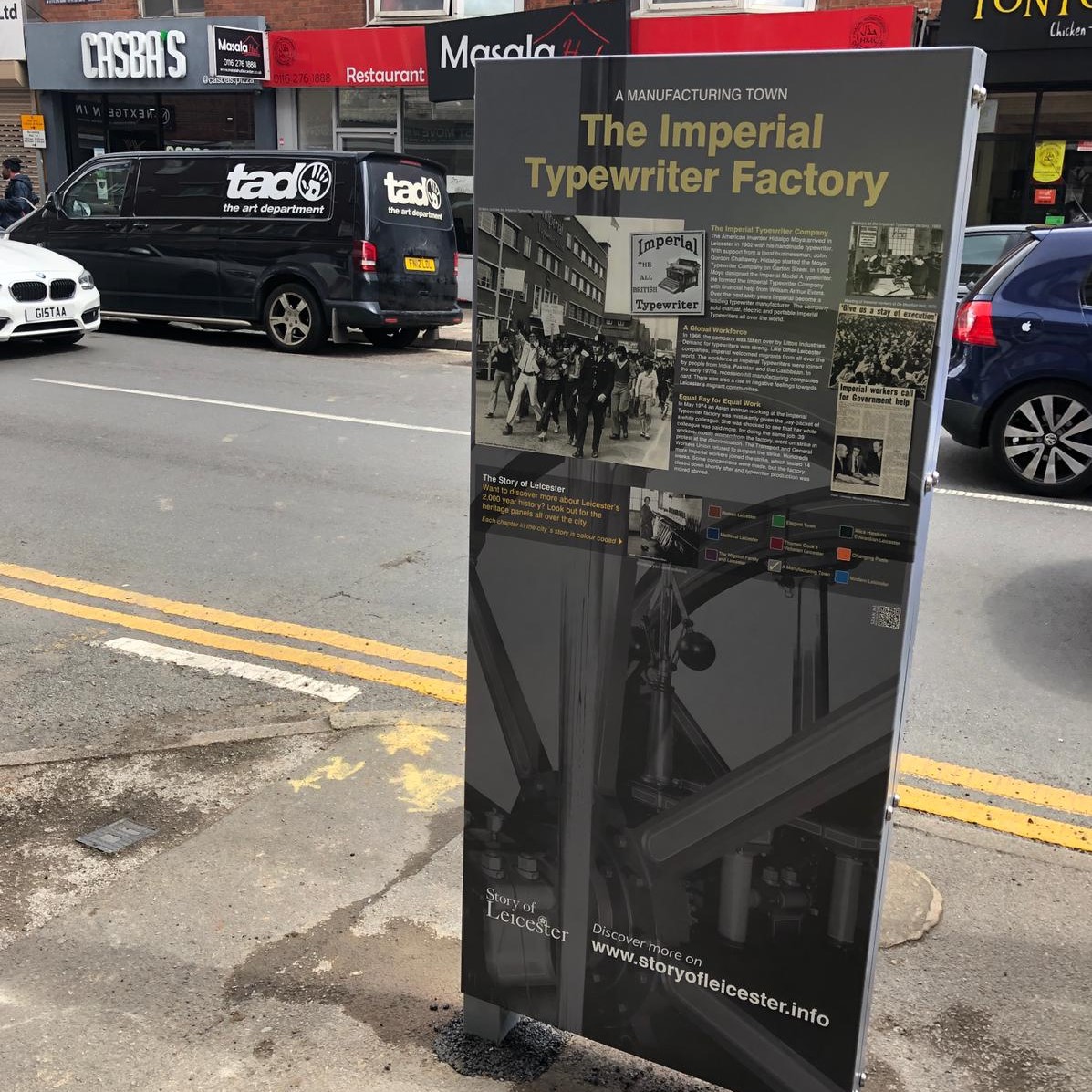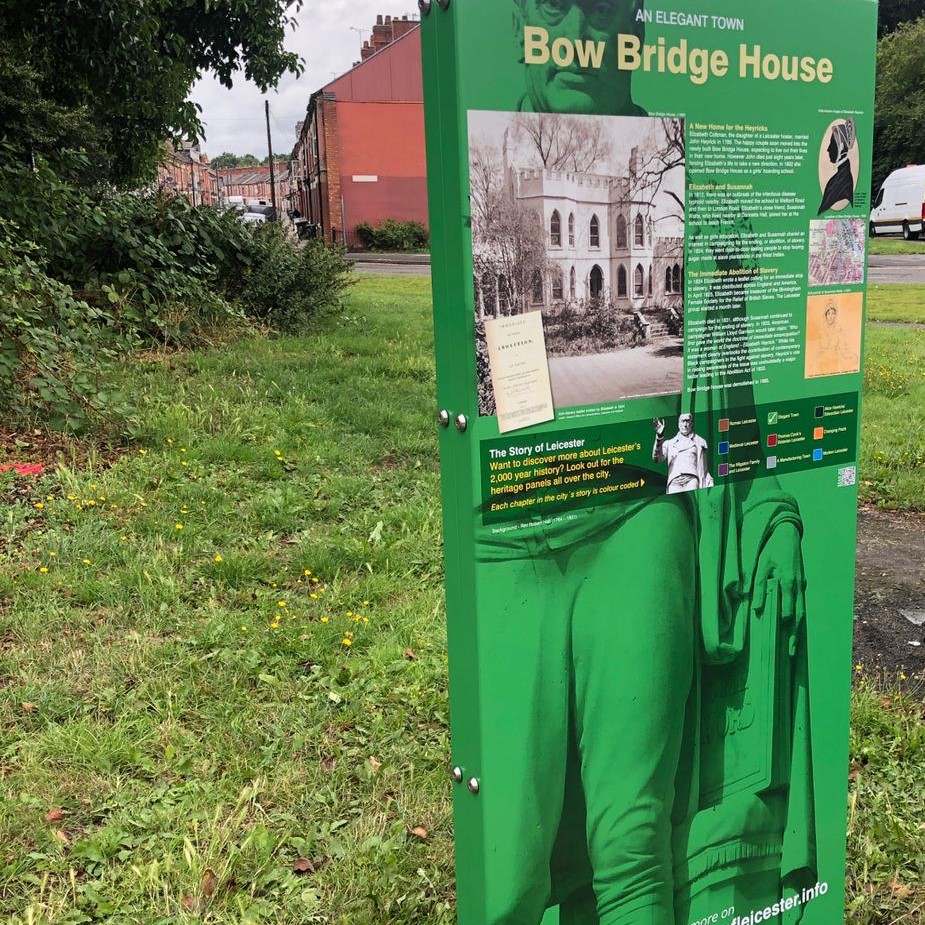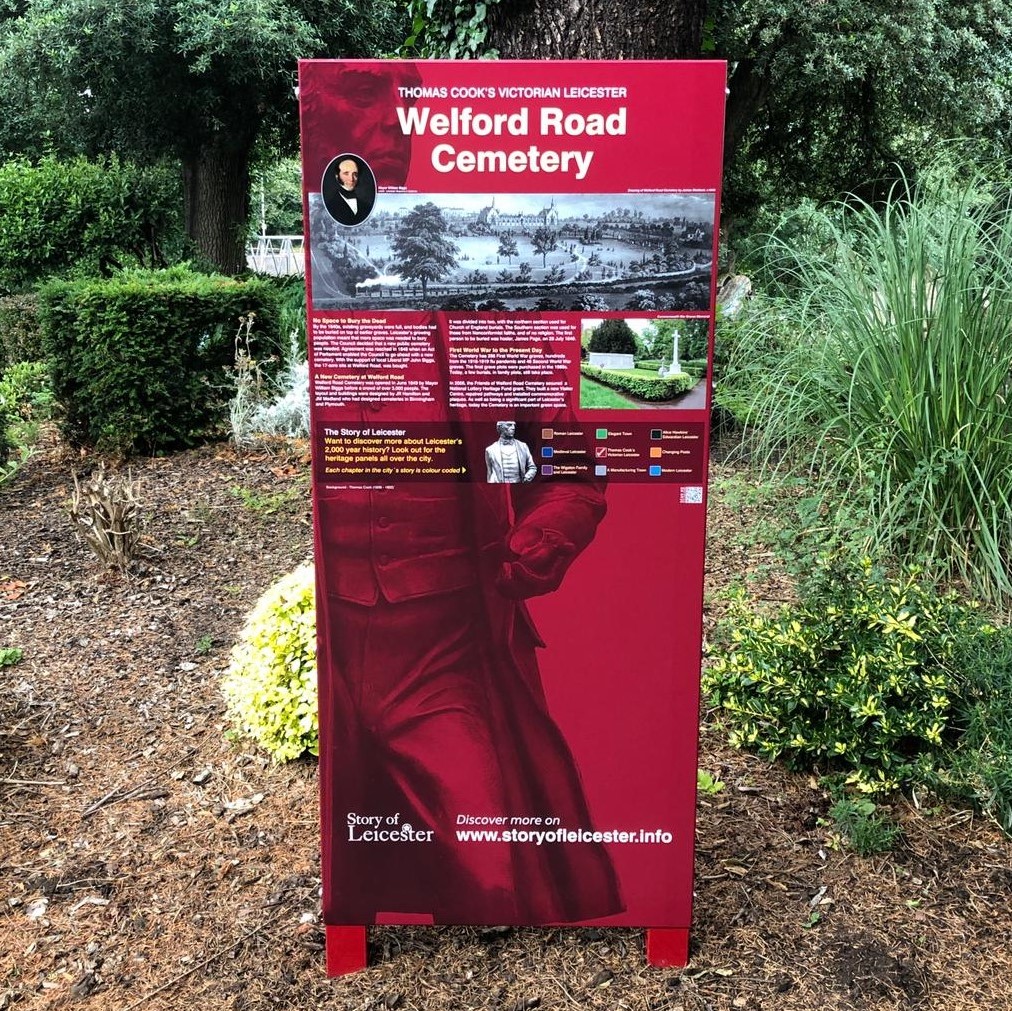Latest Heritage Information Panels Installed
An industrial strike and abolitionists are featured in new heritage panels in the city.
Published: 6 September 2021
The industrial strike at the Imperial Typewriter Building, the house of abolitionist Elizabeth Heyrick and the history of Welford Road Cemetery are all featured on new heritage panels recently produced by Leicester City Council.
The Imperial Typewriter building on East Park Road was the setting of a 1970s strike. The strike centred on white Imperial Typewriter workers being paid more than their Asian counterparts. The Transport and General Workers Union refused to support the strike. Hundreds more Imperial workers joined the strike, which lasted 14 weeks. The Imperial Typewriters factory building was eventually shut down.
Bowbridge House was home to the abolitionist Elizabeth Heyrick who together with Susannah Watts campaigned for the ending, or abolition, of slavery. In 1833, American campaigner William Lloyd Garrison said:
"Who first gave the world the doctrine of immediate emancipation? It was a woman of England – Elizabeth Heyrick.”
Bow Bridge House was demolished in 1965. The panel is located on King Richards Road on the site where the house once stood.
Welford Road Cemetery was opened in June 1849 by Mayor William Biggs before a crowd of over 3,000 people. The Cemetery has 286 First World War graves, hundreds from the 1918-1919 flu pandemic and 46 Second World War graves. The final grave plots were purchased in the 1980s. Today, a few burials, in family plots, still take place. The Heritage panel supplements other heritage panels at the Cemetery.
The panels are part of the Story of Leicester project, which celebrates the city’s 2,000-year history by remembering the people, places and events of Leicester’s recent and distant past.
To find out more about the history of Leicester visit the Story of Leicester website.
Gallery



